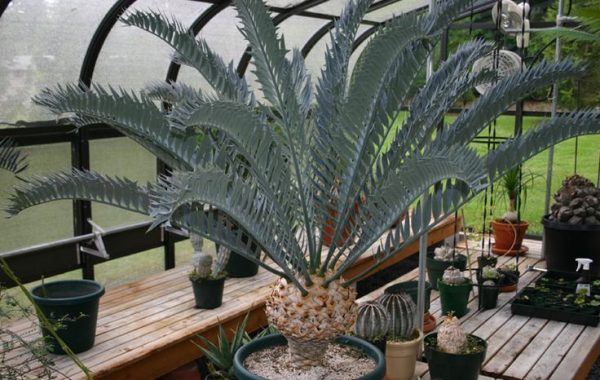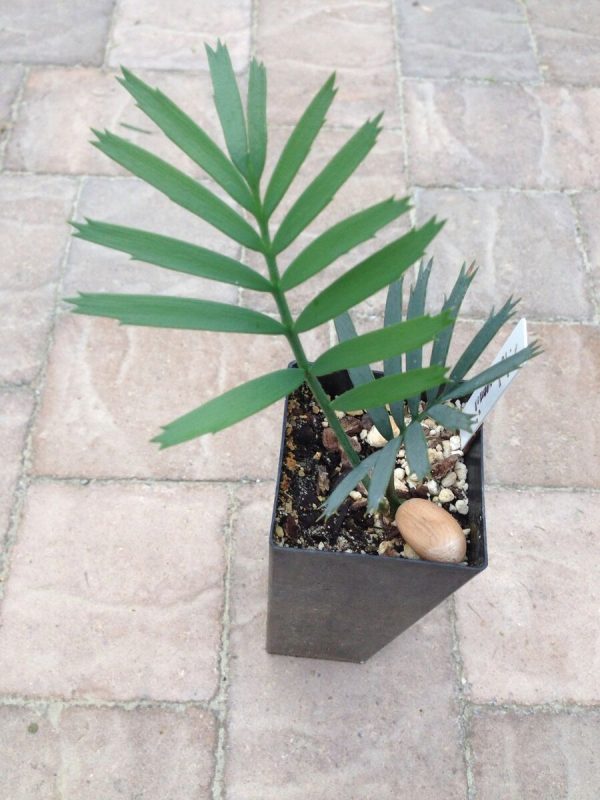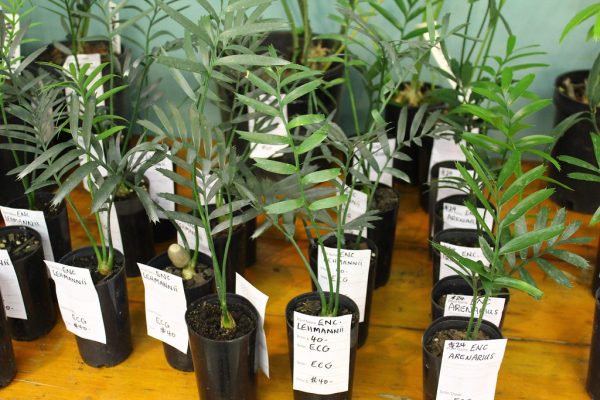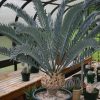Whatapp:
+278.3675.0634
Work Hours
Monday to Friday: 7AM - 7PM
Weekend: 10AM - 5PM






Price range: $30.00 through $80.00
Encephalartos lehmannii, commonly known as the Karoo cycad, is a low-growing, palm-like cycad
Encephalartos lehmannii: is a low-growing palm-like cycad in the family Zamiaceae. It is commonly known as the Karoo cycad and is endemic to South Africa. The species name lehmannii commemorates Prof J.G.C. Lehmann, a German botanist who studied the cycads and published a book on them in 1834. This cycad is listed as near threatened in the IUCN Red List of Threatened Species.
This cycad grows up to two metres tall with a trunk diameter of up to forty five centimetres and may be branched or unbranched. The leaves are up to one hundred and fifty centimetres long, blue or silver and strongly keeled. The leaflets are lanceolate, do not overlap each other and have smooth margins. The male cones are green or brown and up to thirty five centimetres long. The female cones are a similar colour and up to fifty centimetres long. The seeds are red and up to four and a half centimetres long.
This species is found in Eastern Cape Province, South Africa mainly on dry sandstone slopes and ridges where it grows amongst low succulent herbs and shrubs. By flourishing in such an arid environment it demonstrates how the cycad race has endured through the ages, seemingly immune to drought when many other tree species such as the cabbage trees and taaibos are leafless and sometimes dead.
The main conservation concerns for Encephalartos lehmannii include illegal poaching driven by demand from collectors, which threatens wild populations. South Africa regulates the trade of cycads under national laws and international agreements such as CITES to protect these plants from over-exploitation. Despite these protections, enforcement challenges persist, and the species remains vulnerable.
In summary, Encephalartos lehmannii is near threatened due to habitat pressures and illegal collection, with ongoing conservation efforts focused on regulating trade and protecting natural populations.
Measures being:, taken to protect Encephalartos lehmannii from poaching include a comprehensive national strategy and action plan aimed at cycad conservation in South Africa. Key measures are:
Producing illegal collection: The strategy aims to reduce and prevent illegal collection of cycads from the wild to levels that do not harm population persistence. This includes law enforcement efforts and community engagement to curb poaching
Habitat Production: Protecting and effectively managing critical habitats where Encephalartos lehmannii populations occur is a priority to prevent further exploitation
Legal Regulations and Permits: Trade and possession of indigenous cycads like Encephalartos lehmannii are strictly regulated under South Africa’s National Environmental Management: Biodiversity Act (NEMBA) and provincial laws. Permits are required for legal ownership and trade, and international trade is controlled under CITES Appendix I to prohibit commercial trade in wild-collected specimens
Public Awareness : Increasing public awareness about the conservation crisis facing cycads and the consequences of illegal harvesting helps reduce demand and encourages responsible behavior among collectors and the general public
Translocation and Reintroduction: Translocation of cycads from threatened habitats to safer locations and reintroduction programs are practiced to bolster wild populations and reduce pressure on natural populations
Monitoring and Research : Ongoing monitoring of wild populations and research to inform conservation management decisions are integral parts of the strategy
Stakeholder collaboration: Conservation plans involve collaboration among government agencies, private landowners, conservation organizations, and local communities to ensure coordinated efforts for cycad protection
Together, these measures form an integrated approach to mitigate poaching threats and secure the long-term survival of Encephalartos lehmannii in the wild.
Requires bright, direct sunlight for about 6 hours daily and thrives in warm, subtropical climates.
Prefers moderate temperatures and can tolerate some drought.
Tolerates short-duration frost down to about -5 to -7 °C but should be protected from prolonged cold and frost.
Needs neutral to slightly alkaline soil with excellent drainage, preferably sandy soil or a well-draining cactus/succulent mix to prevent root rot.
Water sparingly, allowing the soil to dry out almost completely between waterings. Overwatering and too much moisture, especially in shade, can cause loss of its metallic blue leaf color.
Moderate humidity (around 50%) is preferred, and the plant should be kept in a well-ventilated area.
Use a balanced fertilizer (N-P-K 10-10-10) sparingly during the growing season, approximately once every two months.
Repot every 2-3 years or when the plant outgrows its pot, using a pot with good drainage.
Propagation is done via seeds or offsets; seeds should be sown in well-draining soil and kept warm and bright. Offsets can be separated once rooted.
Pruning is generally unnecessary; remove only dead or damaged leaves to maintain appearance. Avoid excessive pruning to prevent stress.
The plant is toxic to pets and humans if ingested, causing severe gastrointestinal distress. Keep it out of reach of children and pets
Encephalartos lehmannii is slow-growing and can live many years with proper care. It makes a striking ornamental plant in subtropical gardens
Shade and excess moisture reduce its characteristic metallic blue leaf color
This care regimen ensures healthy growth and maintains the plant’s attractive blue-green foliage..
| Sizes | Small, Medium, Large |
|---|
Reviews
There are no reviews yet.